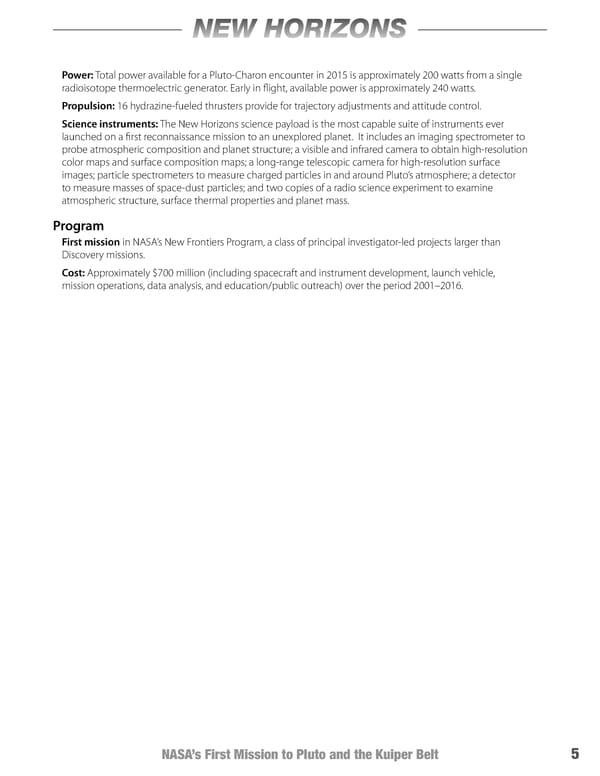NEW HORIZONS Power: Total power available for a Pluto-Charon encounter in 2015 is approximately 200 watts from a single radioisotope thermoelectric generator. Early in flight, available power is approximately 240 watts. Propulsion: 16 hydrazine-fueled thrusters provide for trajectory adjustments and attitude control. Science instruments: The New Horizons science payload is the most capable suite of instruments ever launched on a first reconnaissance mission to an unexplored planet. It includes an imaging spectrometer to probe atmospheric composition and planet structure; a visible and infrared camera to obtain high-resolution color maps and surface composition maps; a long-range telescopic camera for high-resolution surface images; particle spectrometers to measure charged particles in and around Pluto’s atmosphere; a detector to measure masses of space-dust particles; and two copies of a radio science experiment to examine atmospheric structure, surface thermal properties and planet mass. Program First mission in NASA’s New Frontiers Program, a class of principal investigator-led projects larger than Discovery missions. Cost: Approximately $700 million (including spacecraft and instrument development, launch vehicle, mission operations, data analysis, and education/public outreach) over the period 2001–2016. NASA’s First Mission to Pluto and the Kuiper Belt 5
 New Horizons Page 9 Page 11
New Horizons Page 9 Page 11